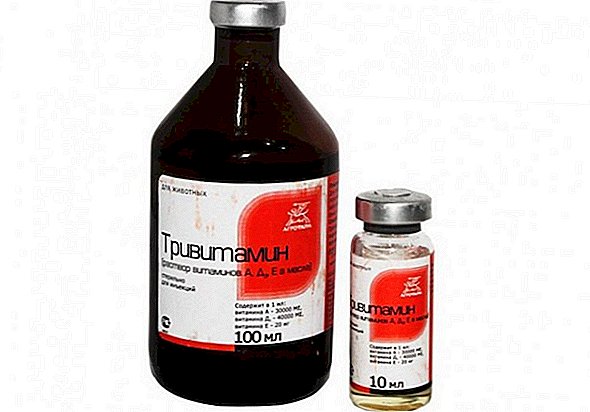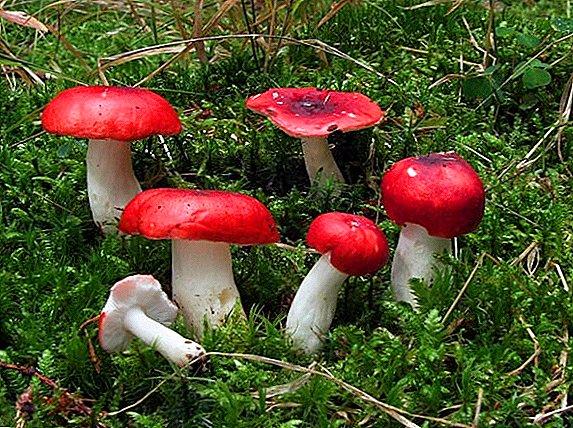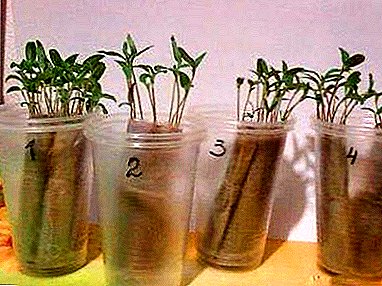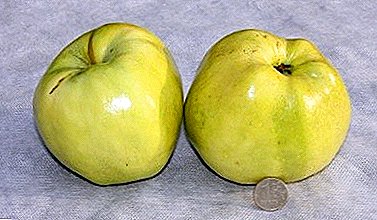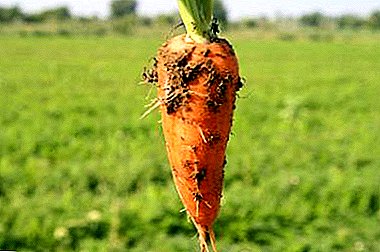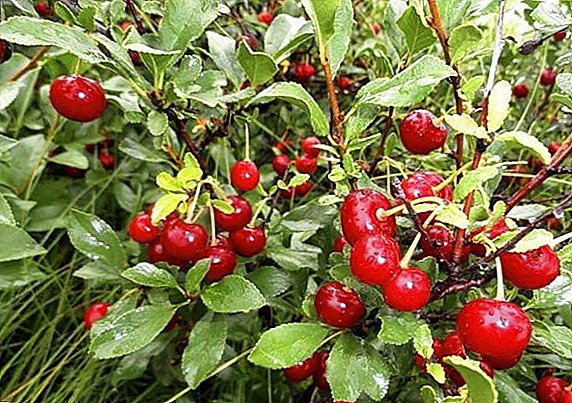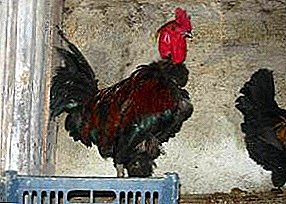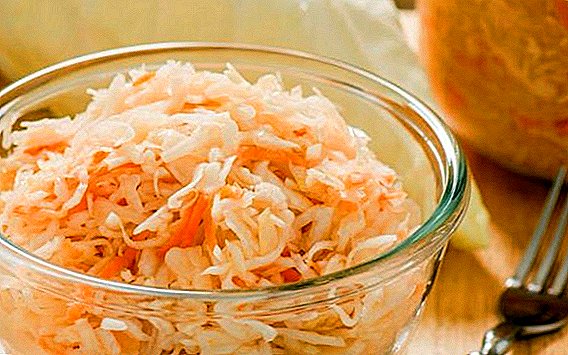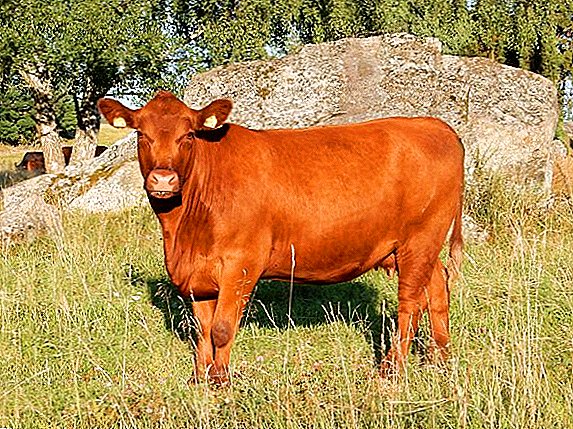 The reproductive organs of a cow for one reason or another may be affected by a cyst, because of which the animal suffers, and the owner receives products of poor quality. To identify the disease, as well as to carry out the necessary treatment, you need to learn more about the disease. In this article we will tell you what an ovarian cyst is, why it appears, consider the diagnosis of the disease.
The reproductive organs of a cow for one reason or another may be affected by a cyst, because of which the animal suffers, and the owner receives products of poor quality. To identify the disease, as well as to carry out the necessary treatment, you need to learn more about the disease. In this article we will tell you what an ovarian cyst is, why it appears, consider the diagnosis of the disease.
What is this pathology
A cyst is a cavity that forms as a result of pathological abnormalities. An ovarian cyst is a spherical hollow neoplasm that occurs as a result of the degeneration of mature follicles or yellow bodies. The impetus to the formation is the excessive secretion of fluid or its delay in the organs.
We recommend reading about how to treat the main diseases of cows: nodular dermatitis, vaginitis, ketosis, udder edema, leukemia, pasteurellosis, mastitis and hoof disease.
Causes
The exact causes are not established, but most often a cyst is formed in the following cases:
- disruption of the neural connection between the ovaries, pituitary and central nervous system;
- use of low quality feed;
- inadequate housing conditions;
- year-round maintenance in the room without walking;
- inflammation of the ovaries or neighboring organs;
- large doses of hormonal drugs used to stimulate the ovaries;
- heredity.
 Feeding low quality feed is one of the causes of ovarian cyst in a cow.
Feeding low quality feed is one of the causes of ovarian cyst in a cow.How manifest
Since a cyst can have several variations, the symptoms in animals are different. There are the following characteristic for adult individuals signs of the presence of the disease:
- decrease in milk volumes and change in its taste;
- milk contains small fat globules, and fat content decreases by 0.1-0.2%;
- milk is more quickly curtailed;
- the animal has increased sexual activity or a complete rejection of intercourse;
- cavities are formed between the root of the tail and the ischial tubercles.
Farmers need to know how many days the cow’s pregnancy lasts, and what to do if the afterbirth does not leave the cow.
Diagnostics
To make an accurate diagnosis, the veterinarian performs two rectal examinations, after which it determines the nature of the cyst (aphrodisia or nymphomania). The second examination is prescribed through two sexual cycles so that the verdict is grounded.  Diagnosis of ovarian cysts in cows Re-examination is necessary because the ovarian cyst can be easily confused with a normally developing follicle (an element of the structure of the ovary), so the diagnosis is made only after comparing the results of the first and second examinations. In some cases, when due to the formation of a cavity, an organ is increased several times, one examination is enough.
Diagnosis of ovarian cysts in cows Re-examination is necessary because the ovarian cyst can be easily confused with a normally developing follicle (an element of the structure of the ovary), so the diagnosis is made only after comparing the results of the first and second examinations. In some cases, when due to the formation of a cavity, an organ is increased several times, one examination is enough.
Pathological changes
The initial stage of the appearance of a cyst is associated with the death of the egg, which matures in the ovary, which is why the follicles receive a "command" to accelerate growth. The outer shell of each structural unit turns into a cyst capsule.
This is followed by one of two things: either the thinning of the walls of the follicle occurs, or their thickening, due to which the cavity does not burst even with a fairly strong mechanical effect.
After the end of the initial formation of the spherical cavity, fluid begins to accumulate in it, which leads to a further enlargement of the ovary. In some cases, a cyst can be the size of a large chicken egg. If the cyst is one and there is a lot of fluid in it, then the animal has symptoms of nymphomania.  But in the case when several pathological formations (polycystic) appear on the ovary, the cow has anaprodisia.
But in the case when several pathological formations (polycystic) appear on the ovary, the cow has anaprodisia.
Such differences are due to the fact that with polycystic is much less hormone that is responsible for sexual desire. But if one large cyst is formed, then this hormone is produced in excess of the norm.
Comprehensive treatment
Treatment of the disease should be carried out after a detailed diagnosis. Each individual case is unique in its own way, therefore, they resort not only to medication, but also to other treatment options.
You will probably be useful to read about how to properly formulate a diet for dry and milk cows.
Power correction
Before starting treatment, you need to change or adjust the diet. Products such as bard, concentrates and pulp are completely removed from the daily menu. Give vitamin and mineral supplements. At the same time, it is not necessary to introduce all the vitamins, namely, those that a cow needs, in order to avoid hypervitaminosis. 
Comfortable conditions
It is necessary to carry out disinfection in the room, after which the daily cleaning is done so that the animal does not come into contact with feces. Good ventilation of the room is also provided so that the cow does not breathe ammonia, which is emitted by urine and feces (irritation of the lung tissue occurs).
The sick animal should be able to rest on a soft, dry bedding. Water and feed must be freely available and have an optimum temperature.
For the successful breeding of cows, comfortable housing conditions are necessary. Learn how to build a barn, as well as how to make a corral and ventilation in the barn with your own hands.
It is also necessary to adjust the daylight and temperature conditions. In the summer in the room should not be hot, and in the winter - cold. The minimum temperature of the content - +7 ° C, maximum comfort - up to +20 ° C inclusive. But the temperature above this indicator causes stress in animals. 
Surgical intervention
The surgical methods of treatment include crushing and puncturing cysts. This is done exclusively by a specialist, as any wrong movement can seriously harm the animal.
3-4 days before the manipulation, it is necessary to massage the ovaries for 10-15 minutes a day through the rectum. The massage is performed by the owner of the animal using the necessary means of protection.
Crushing of a cyst is not often performed, as this can cause excessive bleeding or damage adjacent organs. In the first case, the problem is solved by squeezing the intended place of tear for 10-15 minutes. In the second case, you will have to carry out additional therapy.
Did you know? The protein, which is part of cow's milk, after entering the human body takes on toxins, and then removes them from the body. That is why people working in hazardous industries are given milk on a mandatory basis.
The puncture of the cyst is carried out through the vagina using a sterile needle. Before the operation, an anesthetic is administered to the animal, the tail is fixed and the labia is treated. After that, a specialist pushes the ovary through the rectum to the vaginal fornix. At this point, the assistant inserts a needle wrapped in a rubber tip into the vagina.  Puncture of the cyst through the vagina After the end of the needle is in the immediate vicinity of the vaginal fornix, the assistant pushes it forward with a sharp movement. That punches a rubber tip, tissue of a vagina and a cyst. The fluid that is inside the cyst is removed with a syringe.
Puncture of the cyst through the vagina After the end of the needle is in the immediate vicinity of the vaginal fornix, the assistant pushes it forward with a sharp movement. That punches a rubber tip, tissue of a vagina and a cyst. The fluid that is inside the cyst is removed with a syringe.
We recommend to know what to do next after calving the cow.
Conservative treatment
It involves the use of medicines that lead to cyst resorption, as well as relieve inflammation. Medicines can also be used after surgery.
- Fatty acid. On the day of diagnosis, a cow is injected with 3 thousand IU of synthetic and short-chain fatty acids. Then three times injected neurotropic drugs (Prozerin or Carbacholine) at a dose of 3 ml every other day.

- Hormonal drugs. Within two weeks, the animal is given a 1% progesterone solution intramuscularly at a dose of 10 ml. In parallel, the above-described neurotropic drugs are applied three times a day in a dose of 2-3 ml.
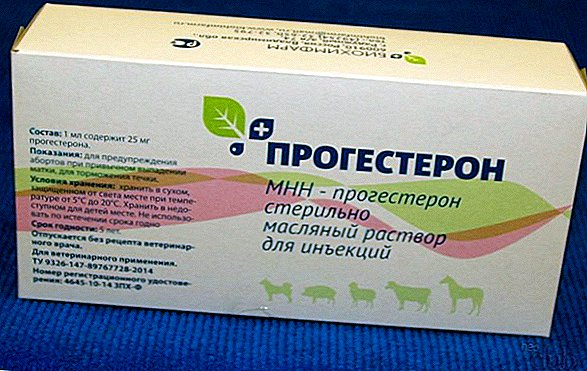
- Therapy after cyst surgery. Intramuscular administration of 1% progesterone solution in a dose of 100 ml together with autologous blood (50-100 ml) for three days. Then there is a break in 5 days, after which 2500 IU of gravogormone are injected together with 2 ml of a 0.5% solution of Prozerin and 10 ml of Trivitamin.
